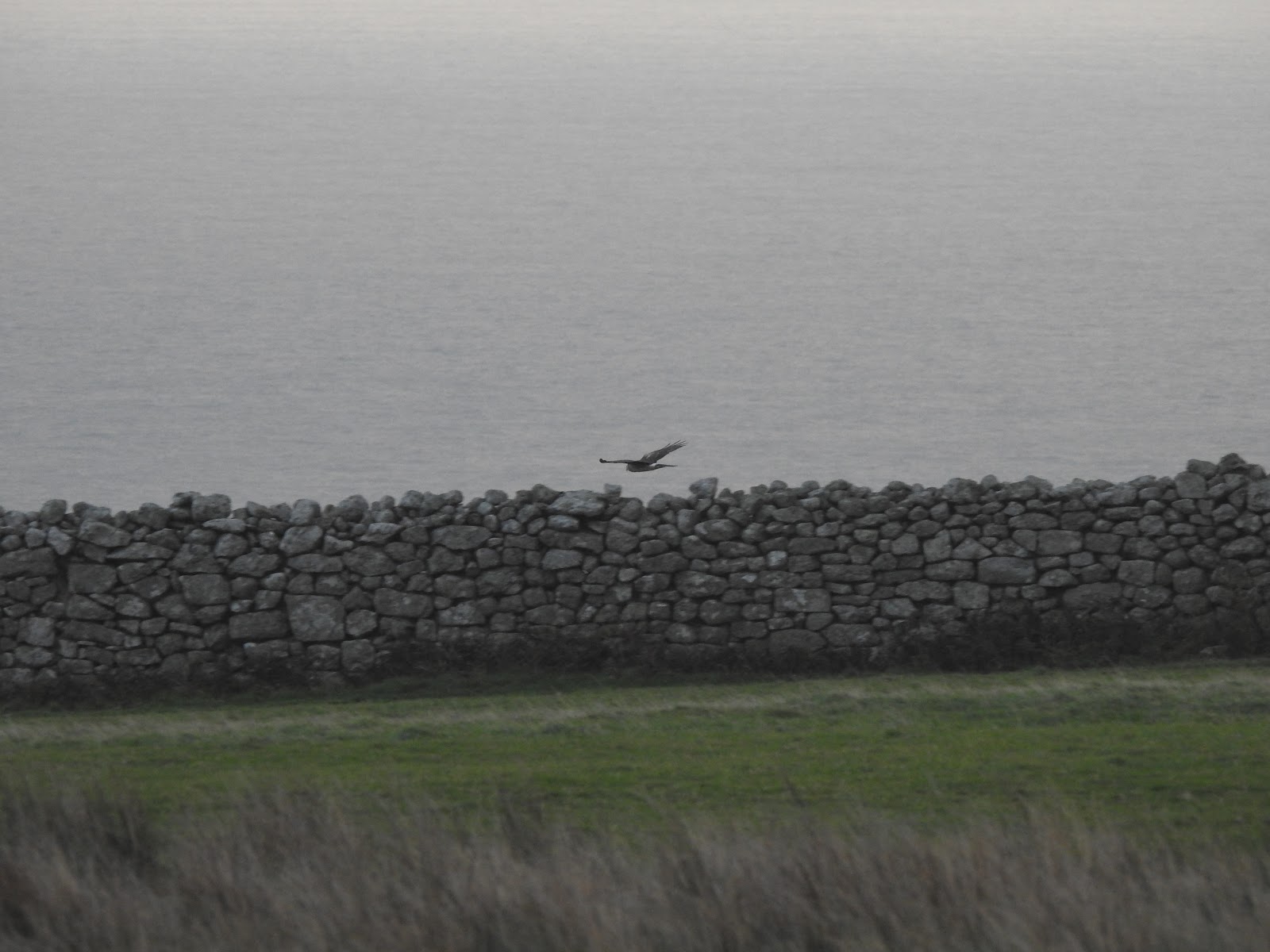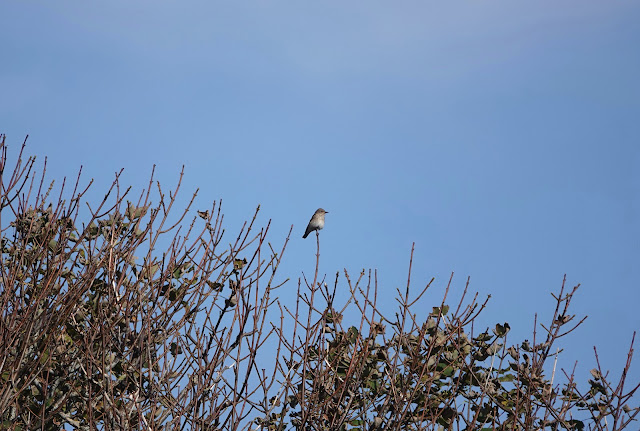Stuart Cossey reports on the last week of 2022 and looks back over an exciting year.
Winds mostly moderate to light from the north. Clear
skies with one small scattering of snow. Mild from the 17th with strong winds from
the south bring low cloud and constant light rain.
A very quiet week. The Greylag Goose was seen
again in Barton Field on 26th, 29th and 31st. Eight Teal were on Pondsbury on the 28th. Ten Oystercatcher were counted on the 26th and five on the 30th. A Golden Plover flew over calling in the low cloud on the 30th. Two Woodcock were flushed in Millcombe on
the 28th.
Flocks of large gulls have been seen in the
farm fields with approximately 100 Herring
Gulls from the 28th. Five Lesser
Black-backed Gulls were with them on the 28th. The Great Northern Diver was still off the Jetty this week
with a second recorded on the 28th.
A Sparrowhawk
was seen along the East Coast on the 28th and 31st. The Jackdaw is still present around the Village on the 29th and
31st. Most of the resident birds have
been keeping a low profile with less than five Blackbirds, Wrens and Robins recorded in Millcombe. A single Goldcrest was heard calling in the
Secret Garden on the 30th. A notable arrival of Chaffinches on the 28th took the total up to 28.
Contributors: Stuart Cossey, Rosie Ellis, Paul Dean
2022 highlights
The year started
off well with the Pink-footed and White-fronted Goose staying on the 1st January. A ‘tristis’
Chiffchaff and Lapland Bunting were also seen in January.
Highlights of February were the Little
Gulls seen with up to 3500 Kittiwakes
off the East Coast. An Iceland Gull arrived on the island after the week
of storms.
March saw the
arrival of the spring migrants including Wheatear,
Puffin, Manx Shearwater, Willow Warbler, Blackcap, Swallow, House Martin and Sand Martin. There was also a big movement of Brambling with a record 40 seen across the island. A female Great Spotted Woodpecker was present
along the Terrace from the 29th March to 18th April. The rest of our common
spring arrivals were seen in April including Redstart, Yellow Wagtail, Reed Warbler, Wood Warbler, Sedge Warbler, Lesser Whitethroat, Spotted and Pied Flycatchers, Swift, Whinchat and Osprey. April
was also an excellent month for rarities including two Canada Geese, a Barnacle Goose, Grey Phalarope, Hawfinch, Bonelli’s Warbler and a male Eastern Subalpine Warbler.
The first of the
breeding birds started in May with 36 species successfully fledging young and
an additional two species with confirmed breeding attempts. The island’s first
record of Mandarin Duck, a female photographed in the
Landing Bay, was seen in May. There was also a Golden Oriole in
Millcombe and a female Bluethroat in
Gannet’s Combe.
June and July are
usually the quieter months on the island. A handsome male Rosy Starling stayed for
a few days in June and a Quail was
flushed in stormy weather towards the end of the month. A putative Thrush Nightingale was flushed from along the West Coast on the 3rd June.
Migration started to pick towards the end of July with the first returning Swifts and waders including Whimbrel, Curlew, Redshank, Dunlin, Turnstone and Green Sandpiper. A Garganey on Pondsbury on the 3rd August was the first since 2007.
Wader migration picked up in August with Wood
Sandpiper, Greenshank and Black-tailed Godwit amongst the more usual species.
September and
October were by far the best months with large movements and ‘falls’ of common
migrants including 400 Willow Warbler, 200 Blackcaps, 4000 Fieldfare
and 12,000 Swallows. There were also
five Wryneck, two Common Rosefinch, another Rosy Starling, Red-breasted Flycatcher, Richard’s
Pipit, Ortolan Bunting, Little Bunting and a Sabine’s Gull. The bird of theyear turned up on the 8th, an amazing
adult male Baltimore Oriole. A ringtail Hen Harrier that turned
up in October stuck around well into November.
The island’s 7th
Cetti’s Warbler was ringed in Millcombe in October and 7th Pallas’s Warbler was ringed in November. A female Long-eared Owl was also ringed in November. The year ended with some cold weather and
high numbers of Lapwing and Golden Plover arrived on the island as well as the 11th record
of Greylag Goose, the 5th goose species seen this year.
All records of
British and Devon rarities are subject to acceptance by the British Birds
Rarities Committee or the Devon Birds Records Committee.
Wishing you all a Happy New Year from all of the Lundy Conservation Team. We look forward to seeing everyone in 2023 (along with some interesting birds!).









































